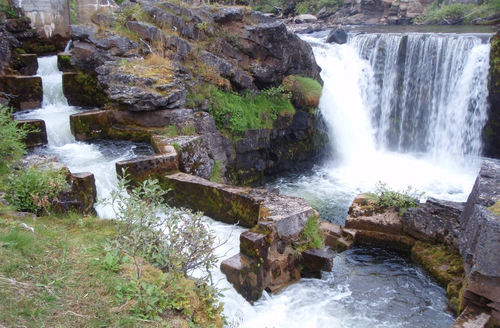Monitoring facilities
Contents
Introduction
Monitoring of fish migration is a measure to:
- verify the function of upstream fish passages and
- support fisheries management and fish conservation.
A fish passage is optimal for monitoring of the fish migration since the fish is restricted to migrate within a small and well-defined volume of water. Typically, monitoring and enumeration of fish should be done at the outlet of the fish passage, giving the true number of fishes that pass a migration barrier. The most common monitoring systems are:
- Mechanical counting systems, such as gates trigging some sort of switch
- Video cameras
- Sonar devices
- Optical enumeration systems based on diodes
- Manual counting and registration
- Conductivity sensing
- PIT-tagging (Passive integrated transponders)
There are also systems combining these techniques, such as mechanical counting with video trigging. In addition to counting of fish passing fishways, monitoring of upstream migration may cover larger areas and time periods to explore the behaviour of fish on their upstream migration. This can be carried out with radio or acoustic telemetry techniques, where receiver antennas in strategic places register the position of tagged fish with different accuracy levels. Both PIT and telemetry monitoring requires that fish is captured and tagged before monitoring can start.
Methods, tools, and devices
During planning
Planning of a pool-type fishway will start with mapping and surveying of the barrier itself and the river reach upstream and downstream of the barrier, including information about the hydropower scheme. Surveying must also be conducted in the area of the river bank where the fishway is planned, including geological surveying. Geographic data should be handled in GIS software for further planning and analyses. The design of the fishway should be conducted with conventional hydraulic- and civil engineering calculations and drawing. All material used in a fishway must be planned to withstand physical strain from water, floods and frost. Monitoring facilities should basically be planned in the upper part of the fishway.
During implementation
Physical implementation of pool-type fishways requires heavy machinery suited for the river size and its surrounding terrain, such as excavators and lorries. Work with explosives is relevant in most cases and blasted rocks and transportation of material out from the site is common. Surplus rocks should not be disposed at site because of pollution risk. The construction phase includes construction of concrete formwork, casting of concrete and iron reinforcement work. In certain sites, pools are formed in clean rocks.
During operation
Injuries on pool-type fishways from physical wear must be monitored and repaired in order to secure regular fish migration. Maintenance work normally require hand-tools more than heavy equipment, but casting of concrete is typical. Depending of the site, removal of sediment, branches, logs and floating debris in pools and fishway entrance is common. Monitoring systems require regular inspection, depending on product and system.
